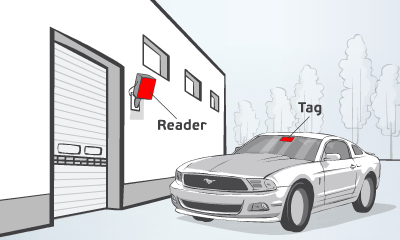What is RFID Label?
In its simplest form, an RFID tag consists of two main parts – an antenna for transmitting and receiving signals, and an RFID chip (or integrated circuit, IC) that stores the identity and other information of the tag. RFID tags are placed on products for tracking using an RFID reader and antenna.
The RFID tag transmits data about a product to the antenna/reader combination via radio waves. RFID tags typically do not have batteries (unless they are Active or not BAP tags); instead, they receive energy from the radio waves generated by the reader. When the label receives the transmission from the reader/antenna, the energy passes through the internal antenna to the chip of the label. The energy activates the chip on the label with the requested information and then transmits a signal back to the antenna/reader.
Each chip has four memory banks – EPC, TID, User and Reserved Part. Each of these memory banks contains information about the labelled product or the label itself, depending on what is specified.
Hundreds of different RFID tags are available in many shapes and sizes with features and options specific to specific environments, surface materials, and applications.
Types of RFID Tags
Since there are a variety of RFID applications, RFID tags and ways to categorize them are just as much.
Form Shape – Satin / Polyester Label, Card, Badge, Hard Tag, Cardboard, Sticker
Frequency Type – LF, NFC, HF, UHF Passive (902 – 928 MHz, 865 – 868 MHz or 865 – 960 MHz), BAP, Active
Environmental Factors – Water-resistant, Rugged, Temperature-resistant, Chemical-resistant
Customizable content – Shape, Size, Text, Coding
Applications – Laundry Labels, Sensor Labels, Embeddable Labels, Autoclavable Labels, Vehicle Labels, High Memory Labels, Product Labels
Special Surface Materials – Metal mounting labels, Glass mounting labels, Labels for liquid-filled products
